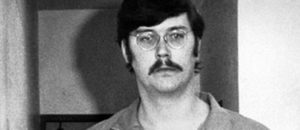Dennis Nilsen – Full Sutton, Yorkshire, England

Dennis Nilsen was a British serial killer who murdered several men in London between 1978 and 1983 and became notorious for retaining and dismembering his victims’ bodies. His crimes and subsequent conviction made him one of the most infamous UK offenders of the late 20th century.
Key Facts
- He confessed to killing 15 men and boys during interrogations following his arrest.
- In press coverage he was often compared to contemporaneous American killers and sometimes dubbed the “Muswell Hill murderer.”
- Police arrested him in 1983 after human remains and tissue were discovered blocking his plumbing and drains.
- At trial in 1983 he was convicted of six counts of murder and two counts of attempted murder.
- He received a life sentence with a judge recommending a minimum term be served before any possible release.
- Methods used included strangulation and asphyxiation, followed by retention, dismemberment and concealment of remains.
- The murders occurred in north London, at properties he occupied in the late 1970s and early 1980s.
- Many victims were young men who were transient or socially vulnerable, and some were known to be homosexual.
- Born in Scotland in 1945, he had previously served in the British Army and worked in various civil positions before moving to London.
- He died while in custody in May 2018, having spent decades in high-security detention.
Crimes and Victims
The killings took place between 1978 and 1983 and involved male victims who were often socially isolated or transient. Nilsen admitted to keeping the bodies for varying periods before dismembering and attempting to dispose of remains.
Investigations showed a recurring pattern: contact with a victim in a domestic setting, followed by asphyxiation, retention of the corpse, and later attempts to destroy or conceal remains. The discovery of body parts in plumbing and waste systems at one of his residences was central to linking him to multiple deaths.
Capture and Trial
Neighbors alerted police to clogged drains and persistent odours at a property where Nilsen lived, prompting officers to investigate and uncover human remains. His subsequent arrest in 1983 followed forensic examination and interviews that connected him to numerous disappearances.
At the Old Bailey trial later that year he was found guilty of six murders and two attempted murders; the judge imposed a life sentence and recommended a significant minimum term. Court testimony and psychiatric evidence informed sentencing, but the jury convicted him of the principal charges presented.
Psychology and Motives
Assessments of Nilsen described a complex mix of sexual fixation, loneliness and a desire for control that manifested in his treatment of victims after death. He told interrogators and later interviewers that he derived a form of companionship from retaining corpses, a claim that featured in psychiatric reports.
Experts who examined him discussed his social isolation and difficulty forming lasting attachments, alongside sexually motivated behaviour involving deceased partners. While multiple theories have been advanced about his motives, official accounts emphasise a combination of emotional dependence and deviant sexual interest rather than a single, simple explanation.
Background / Early Life
Dennis Nilsen was born in Scotland in 1945 and spent parts of his early life in the north of the country before joining the British Army as a young man. Military service and subsequent civilian employment took him away from his place of birth and eventually to London, where he settled and lived through the 1970s and early 1980s.
He held a variety of jobs, including roles in the civil service, and maintained a largely private personal life. Friends and acquaintances later described him as socially reserved and at times lonely, characteristics that investigators and writers have linked to his later offences.
Legacy and Media Coverage
The case attracted extensive media attention in the UK and abroad and has been the subject of books, documentaries and dramatizations that examine both the crimes and the social context in which they occurred. Brian Masters’s book and subsequent television portrayals contributed to public understanding and debate about the offences and the victims’ vulnerability.
Coverage of the case also prompted discussion about policing of missing-persons reports and the risks faced by marginalized men in urban environments. Nilsen’s crimes remain a reference point in true-crime literature and in analyses of offender behaviour and forensic investigation techniques.










